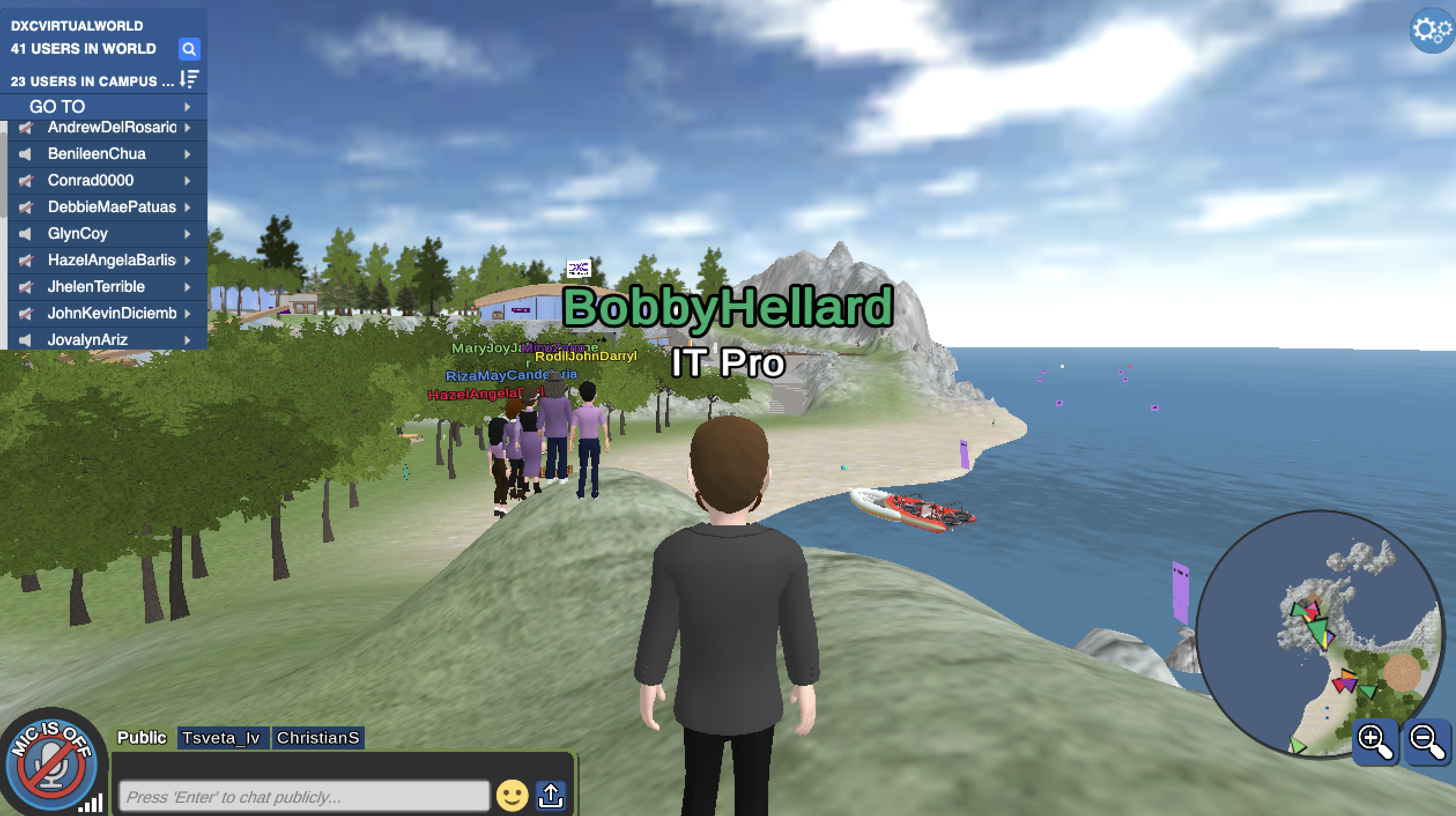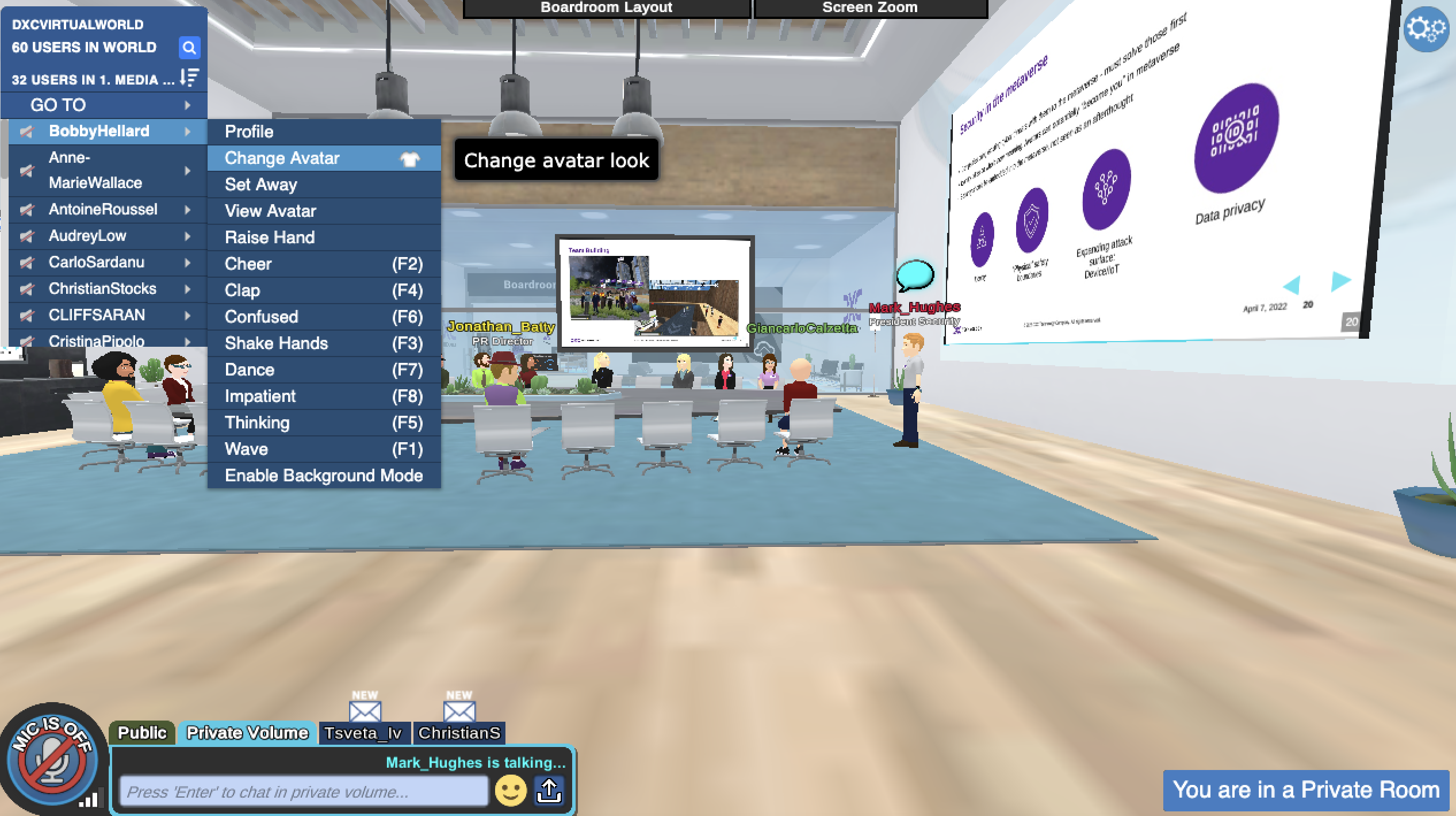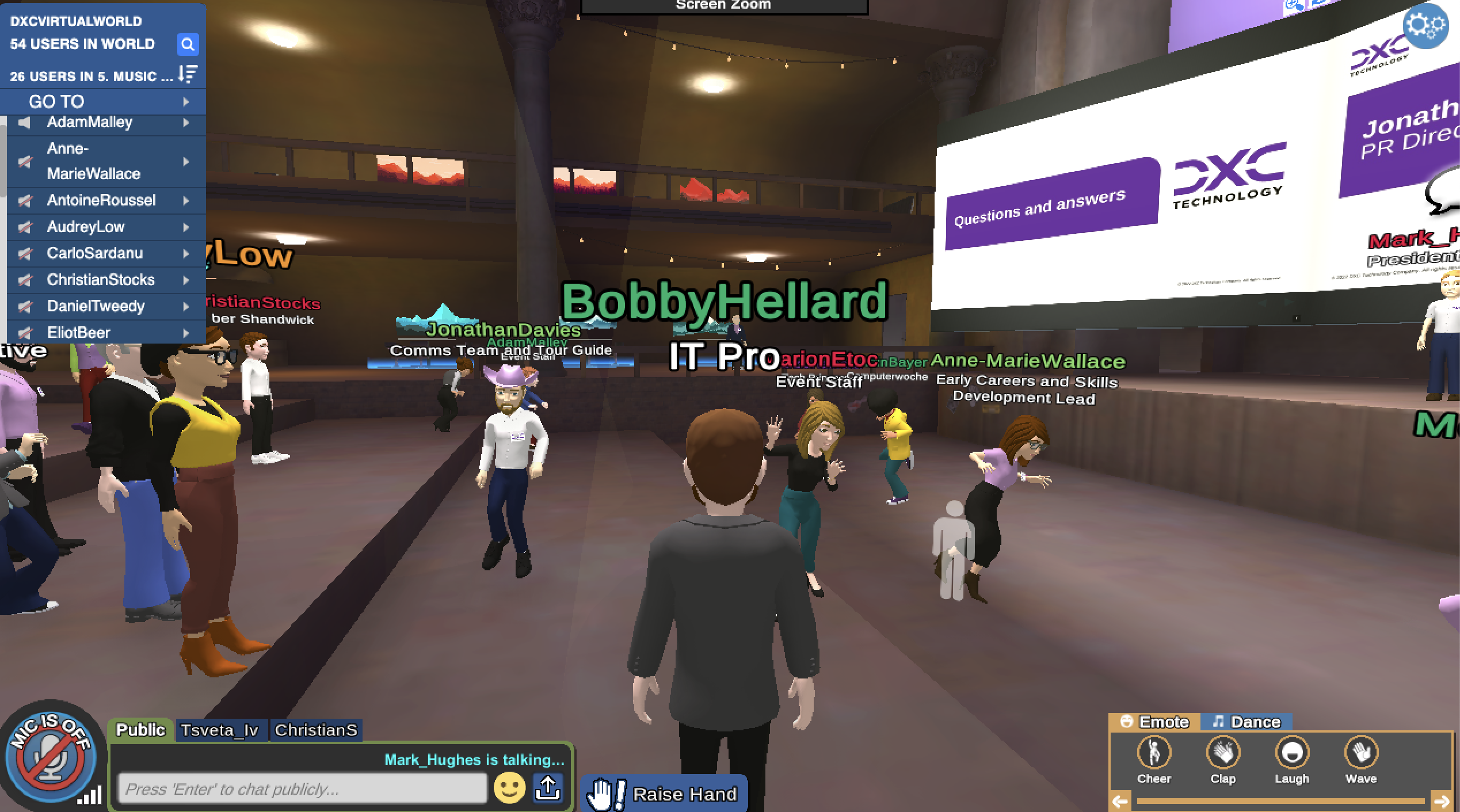Into the metaverse: Everything we learned from our virtual tour
Constant distractions – and not much collaboration – make it hard to see the business use cases








My first interaction in the metaverse was with a black man in a bow tie. He didn’t say anything and after a minute talking to him I eventually realised he wasn’t a welcome party. He was the avatar I needed to customise. It was at this point I realised I might be the wrong IT Pro journalist to be reporting live from inside the world of virtual reality (VR).
This version of the metaverse had been built by the American IT specialist DXC, which had kindly invited us on a tour of its virtual campus. Once I had sorted out my face and clothes, my avatar was ‘teleported’ to the welcoming area, when I met up with the DXC media team and some fellow journalists.

There were two instant red flags. Firstly, what the fudge is the dress code? I was meant to be “working” and this was a media briefing, but the tour guide wore a pink cowboy hat like he was leading us on a hen do. Secondly, there was a guy doing some sort of dance move. I found it totally distracting. In fact, the whole space was a distraction. I was spinning around looking at the virtual scenery and, quite frankly, I missed most of the actual presentation.
What I did catch, though, was that DXC said it had been working in this area since 2018. Had they been using the term “metaverse” the whole time? We know it comes from the novel Snow Crash, which was published in 1992, but it wasn’t until Mark Zuckerberg changed Facebook to Meta in 2021 that it became common parlance.

“We’ve been calling it ‘immersive collaboration’,” a member of its presentation team told me. “But we have been using the term ‘metaverse as well, actually. Since 2001, we were already talking about working in the metaverse, way back before Meta changed its name. So it was not new for us”
Whatever terminology DXC was using, I couldn’t fault its efforts because the world it had built was very beautiful. It was a sort of island with a beach area, a “soccer” field (it’s an American company) alongside a building with meeting rooms and a dance hall. I enjoyed it so much I was still running around exploring long after the briefing had finished. I wasn’t alone, as there were a few avatars dotted around the beach area, mostly loitering at the lighthouse, presumably trying to get the full view of the island. I tried making some small talk here, to no avail. I said “hello” a few times and even got my avatar to wave. I was ignored, though.

DXC probably could have made some kind of effort to get people talking to one another – this was supposed to be ‘immersive collaboration’ after all. I was keen to hear from the other guests and add more perspectives to this account of my first foray into the metaverse. Sadly you only have my thoughts and feelings and they’re largely negative. I mean, well done to DXC, it’s a great place, but what actual ‘work’ can I do there? I didn’t really meet anyone, I didn’t uncover any newsworthy info and, in all honesty, I wasted about two hours – I felt a bit guilty going for lunch straight after it.
Get the ITPro daily newsletter
Sign up today and you will receive a free copy of our Future Focus 2025 report - the leading guidance on AI, cybersecurity and other IT challenges as per 700+ senior executives
So, I had my fun – I even tried to drown myself in the virtual sea – but I left the metaverse still unsure of what use it has in the business world.
Bobby Hellard is ITPro's Reviews Editor and has worked on CloudPro and ChannelPro since 2018. In his time at ITPro, Bobby has covered stories for all the major technology companies, such as Apple, Microsoft, Amazon and Facebook, and regularly attends industry-leading events such as AWS Re:Invent and Google Cloud Next.
Bobby mainly covers hardware reviews, but you will also recognize him as the face of many of our video reviews of laptops and smartphones.
-
 Bigger salaries, more burnout: Is the CISO role in crisis?
Bigger salaries, more burnout: Is the CISO role in crisis?In-depth CISOs are more stressed than ever before – but why is this and what can be done?
By Kate O'Flaherty Published
-
 Cheap cyber crime kits can be bought on the dark web for less than $25
Cheap cyber crime kits can be bought on the dark web for less than $25News Research from NordVPN shows phishing kits are now widely available on the dark web and via messaging apps like Telegram, and are often selling for less than $25.
By Emma Woollacott Published
-
 Capturing the Web 3.0 opportunity with crypto on-ramp
Capturing the Web 3.0 opportunity with crypto on-rampwhitepaper A payment method that lets users purchase their desired cryptocurrency
By ITPro Published
-
 A guide to help you choose the UPS battery backup for your needs
A guide to help you choose the UPS battery backup for your needsWhitepaper Download this guide and stay connected with a UPS that's free of interruption or disturbance
By ITPro Published
-
 Big Tech AI alliance has ‘almost zero’ chance of achieving goals, expert says
Big Tech AI alliance has ‘almost zero’ chance of achieving goals, expert saysNews Companies like Microsoft, Google, and OpenAI all have competing objectives and approaches to openness, making true private-sector collaboration a serious challenge
By Rory Bathgate Published
-
 Otter.ai brings collaborative AI to meetings with Otter AI Chat
Otter.ai brings collaborative AI to meetings with Otter AI ChatNews The speech-to-text giant has set its sights on contextual AI
By Rory Bathgate Published
-
 Slack says automation can save every employee a month of work per year
Slack says automation can save every employee a month of work per yearNews Research from Slack found that workers believe generative AI tools will revolutionize productivity
By Ross Kelly Published
-
 Dropbox cuts 16% of staff, cites new AI focus
Dropbox cuts 16% of staff, cites new AI focusNews The layoffs mark one of the first tangible examples of AI-related cuts at a major tech company
By Ross Kelly Published
-
 AWS Bedrock distances firm from Microsoft, Google in generative AI race
AWS Bedrock distances firm from Microsoft, Google in generative AI raceNews AWS Bedrock's ‘developer-first approach’ aims to offer businesses the easiest way to build unique AI applications
By Ross Kelly Published
-
 Generative AI has left the metaverse in the dust
Generative AI has left the metaverse in the dustOpinion Generative AI demonstrating tonnes of business use cases only serves to highlight the hopelessness of the metaverse
By Rory Bathgate Published